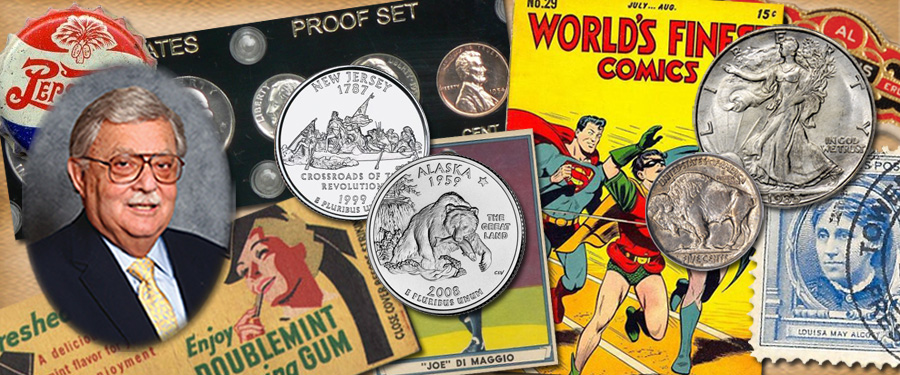
After a break to reminisce about the coins in the Pogue Collection, I return to my discussion of teenage collecting. In the earlier parts of this series, I focused on how my generation of Americans collected, through such challenges as the Great Depression and World War II. At the conclusion of Part 8, I was discussing collecting during the 1950s through 1970s and how the rise and fall of Proof sets and other modern issues had affected the hobby during that era.
As collectors branched out into different areas of numismatics, some of them would find their way to Stack’s in New York City, where as professional coin dealers we would help them navigate the hobby and fine tune their interests. At Stack’s, I and my family continued to concentrate on earlier American coins but our goal was to serve our clients and so we also kept an eye on the modern coin market and did what we could to help those collectors as well. As noted previously, the fluctuating markets for such things led to some people leaving the hobby and coin organizations lost members and publications lost subscribers.
As the hobby matured it became harder and harder for people with little or no disposable income to enjoy numismatics. While coins could still be gathered from circulation, the more desirable older coins became harder and harder to find. The change from silver to clad composition reduced the intrinsic value of the higher denominations. Our coinage designs became somewhat stagnant, as most motifs remained the same or featured only minor changes.
If we fast forward to the last two decades of the 20th century we can see one way the United States Mint tried to enhance their profits. The “classic” commemorative era had come to an end in 1954. For nearly 30 years, the only commemorative coins that were struck were the 1976 Bicentennial issues, which were really “regular” issue coins. However, beginning with the 1982 George Washington half dollar, celebrating the 250th anniversary of that president’s birth, the Mint once again began issuing many commemoratives, all of which sold at a premium. In order to collect these and keep a collection complete and up to date, thousands of dollars could be required. This resulted in a substantial profit to the Mint, but made collecting difficult for those on a limited budget.
Various problems with the Mint’s commemorative programs led to hearings before a House coinage subcommittee to reform the non-circulating commemorative program. At one such hearing in 1995 I suggested that a circulating commemorative be issued that could be collected by all at a cost of only face value. From this seed grew the Statehood quarter dollars issued from 1999 to 2008 (and eventually other circulating commemorative issues). The coins were distributed all over the country, five different states per year, honoring each in the order it joined the United States. A whole new group of collectors began searching through change to find the new quarters.
The ability to find collectible coins of interesting and historic designs in pocket change opened up coin collecting again to people who could not devote thousands of dollars to it. This included teenagers, children and others who could now complete a State quarter collection for just the face value of the pieces. The hobby also produced specialty boards and holders that added interest to the project and collectors responded by “filling them up!” And, if someone tired of collecting, he or she could just spend the coins, with no loss of value.
While this program did not solve all the problems associated with the Mint and its desire to profit from collectors, it did offer a new generation a way to catch the numismatic bug and try out the hobby without a great outlay of money and the possible disillusionment that can accompany a high-priced investment that does not work out as anticipated. I hope that the Mint can continue to provide such collecting options for years to come, to build a base of dedicated and enthusiastic numismatists.





